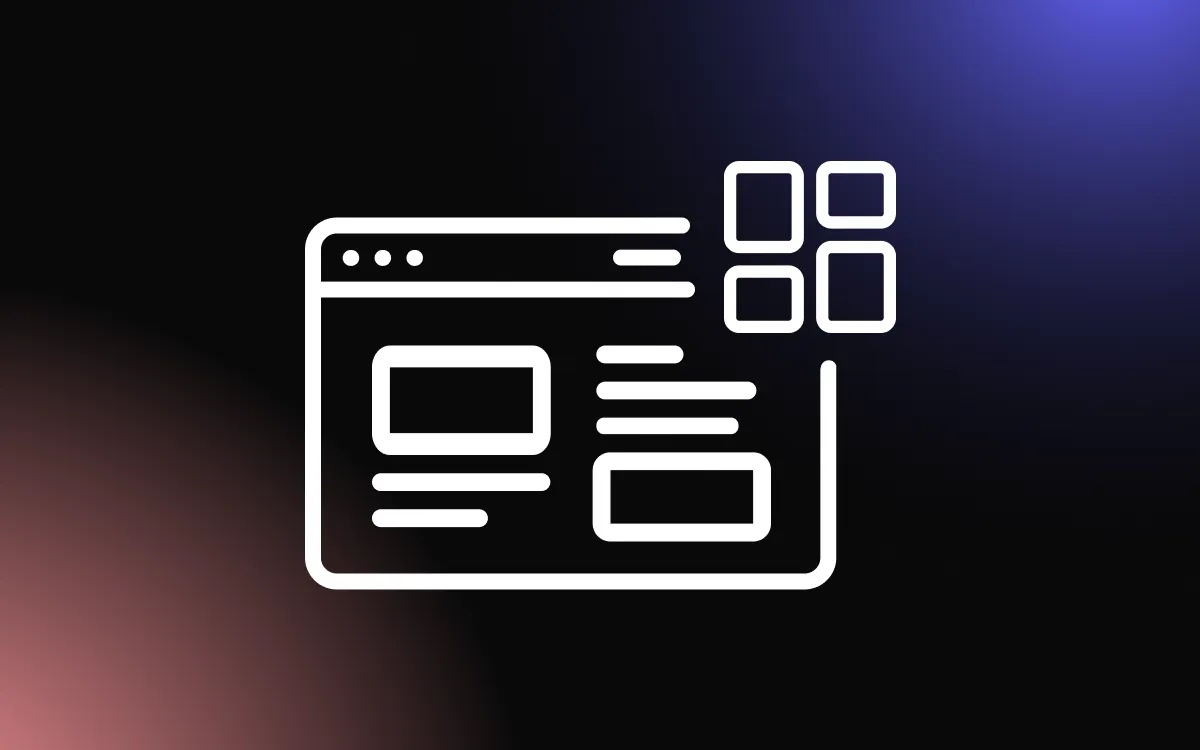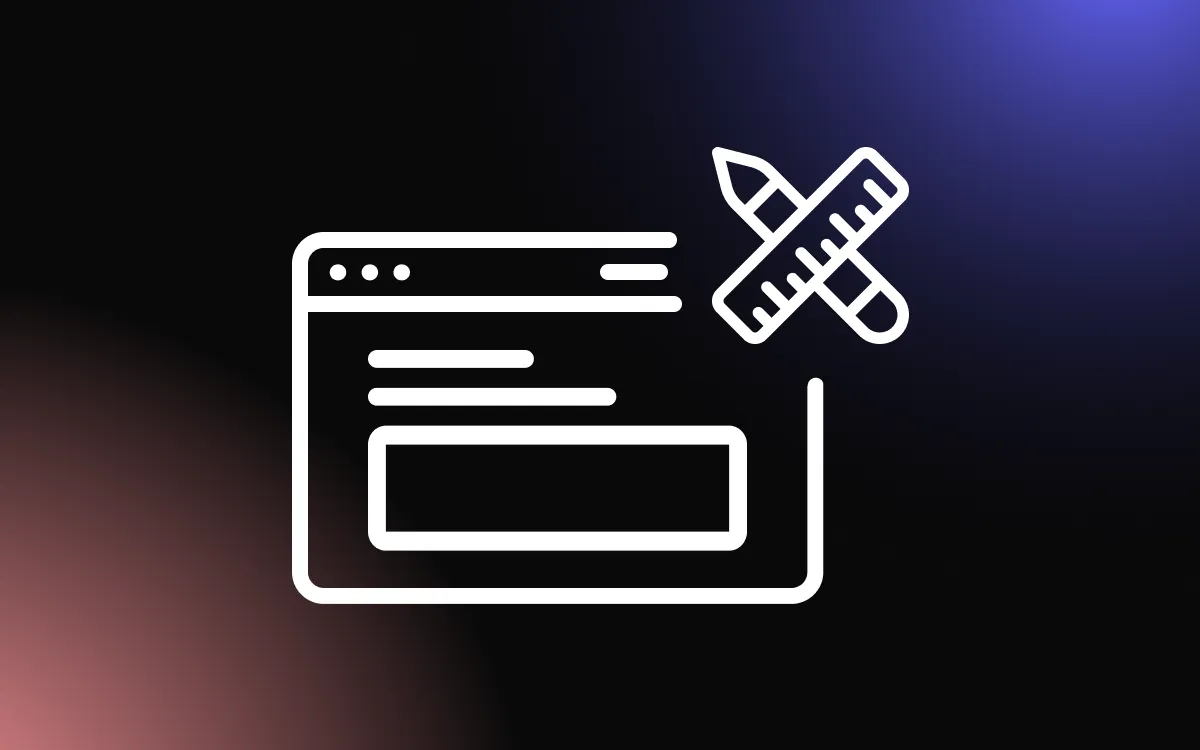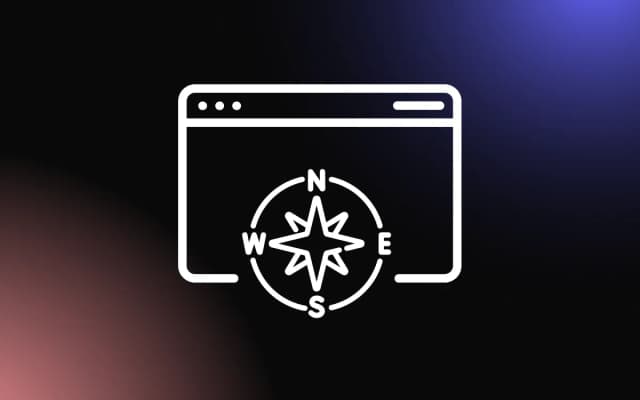
There’s nothing quite like a well-designed “Contact Us” page to assure your site visitors that there are real, approachable people behind your brand, eager to assist with their queries.
Yet, isn’t it fascinating how this often-overlooked component can become a battleground for creativity, function, and user experience? With the right blend, you can convert a simple contact page into a powerful customer conversion tool.
Welcome to our latest blog post, where we dive into the intricacies of designing an effective “Contact Us” page — a subtle art that intertwines web design aesthetics, user-friendly functionality, and crucially, your brand’s unique touch.
Stick around if you’re ready for your “Contact Us” page to become more than just an afterthought; it’s about to take center stage in fostering connection and building trust with your visitors.
Understanding Your User’s Needs

Who Uses the “Contact Us” Page?
The “Contact Us” page is for everyone — potential customers seeking more information, existing clients needing support, business partners wanting to connect, or job applicants hoping to join your team. Therefore, understanding your audience and their unique needs is the first step in creating a “Contact Us” page that delivers value to its users.
User Expectations and Requirements
When visitors land on your “Contact Us” page, they’re seeking a swift and hassle-free way to get in touch with you. They’re hoping for clear and precise contact details, a user-friendly contact form, prompt responses, and a well-organized layout. Plus, they value their privacy and appreciate reassurances that their personal data will be treated with care.
Aligning the “Contact Us” Page with User Needs
Designing a “Contact Us” page that aligns with user needs involves considering who your users are, what they expect, and how they interact with your page. It’s about simplicity, clarity, and accessibility. Ensuring the contact form is simple to complete, the contact details are easy to find and understand, and the page is accessible to all users, regardless of their abilities or the devices they use, are key considerations in meeting user needs.
Structuring Your “Contact Us” Page

Creating a User-friendly Layout
The layout of your “Contact Us” page plays a significant role in how users interact with it. A user-friendly layout is clean, intuitive, and prioritizes the most important elements. It ensures that users can find what they need quickly and easily, whether it’s your email address, phone number, or contact form. A well-designed layout also considers readability and visual hierarchy to guide users through the page.
Positioning of Key Elements
Contact Information
Your contact details are the star of your “Contact Us” page, and they deserve to shine. This means your phone number, email address, and physical location should be clearly visible and easy to find. It’s super important to keep this info up-to-date and accurate to avoid any mix-ups or frustration for your users.
Contact Form
A contact form allows users to send a message directly from your website. It should be easy to find and simple to use. Keep it short and only ask for necessary information to increase the likelihood of users completing it.
Location Map
Including a map on your “Contact Us” page is especially useful for businesses with a physical location. It helps users locate your business and plan their visit. Embedding a Google Maps link can provide users with an interactive experience, allowing them to zoom in/out and view the surrounding area.
Responsive Design Considerations
With the rise of mobile internet usage, it’s essential to design a “Contact Us” page that looks great and functions well on all device sizes. Responsive design ensures that your page adjusts to the screen size and orientation of the device a visitor is using.
Whether someone accesses your “Contact Us” page from a desktop, tablet, or smartphone, they should be able to easily view and navigate the page, fill out the contact form, and access the necessary information without any inconvenience.
Providing Multiple Contact Options

In today’s digital age, users expect multiple ways to get in touch with your organization. Offering a range of contact options caters to different user preferences and increases the chances that a visitor will reach out.
Contact Form Design and Fields
A contact form is a crucial element of any “Contact Us” page. The design should be clean, intuitive, and user-friendly. Regarding the form fields, ask only for necessary information to reduce friction and improve form completion rates. Typically, this includes the user’s name, email, subject, and message. However, depending on your needs, you may want to include additional fields such as phone number, company name, or a drop-down menu for the inquiry type.
Phone and Email Contact Details
While a contact form offers a direct line for users to drop you a message, some folks still favor the old-school methods like phone or email. So, don’t forget to include your phone number and email address in an easy-to-spot location. If you have separate numbers or addresses for different departments (like sales, and support), label them clearly.
Physical Address and Maps
If your organization has a physical location, include the full address. For businesses with multiple locations, a list or drop-down menu of all locations can be helpful. Additionally, embedding a map can give users a visual context of your location. Google Maps API provides an easy way to embed interactive maps directly onto your page.
Social Media Links
A lot of folks these days turn to social media to get in touch with businesses or to stay up-to-date with their latest news. So, consider including social media links (in the form of icons) that link to your business’s social media profiles, like LinkedIn, Twitter, Facebook, or Instagram. This way, your users can pick their favorite platform to connect with you.
Live Chat and Chatbots
Live chat and chatbots are like your website’s personal concierge, providing instant help to users without them having to leave your site. This can really boost user satisfaction and engagement. If your team has the bandwidth to handle live chat or a chatbot, it’s definitely worth considering for your “Contact Us” page.
Crafting Engaging Copy

The language and tone of your “Contact Us” page should reflect your brand personality while also being welcoming and professional. This helps to create a consistent brand experience across your entire website.
Tone and Language
The tone of your “Contact Us” page should be consistent with the tone used throughout your website. Whether you opt for a formal or conversational style, ensure it aligns with your brand identity and resonates with your target audience. The language used should be easy to understand, avoiding any industry jargon that might confuse users.
Encouraging User Interaction
To motivate users to get in touch, use warm and inviting language. Instead of a plain “Contact Us,” you could try phrases like “We’re here to help,” “Let’s chat,” or “Reach out – we’d love to hear from you.”
Providing Reassurances about Response Times
One common concern users have when contacting businesses is the uncertainty about when they’ll receive a response. To mitigate this, include a statement about your expected response times. Whether you promise to reply within 24 hours or by the next business day, providing these reassurances can increase user trust and encourage more people to contact you.
Visual Elements on the “Contact Us” Page

Importance of Visual Aesthetics
Your “Contact Us” page should be a feast for the eyes and match the overall style of your website. High-quality visuals can draw in users, build trust, and enhance the overall user experience. But keep in mind, this doesn’t mean your page needs to be overly complex or showy. Often, a clean, minimalist design can be very effective and make your page more user-friendly.
Use of Images and Icons
Images and icons can add a visual appeal to your “Contact Us” page, making it more engaging. Icons can be used to visually represent different types of contact information, such as a phone icon for your phone number or an envelope for your email address.
However, make sure any images or icons you use don’t distract from the main purpose of the page — to facilitate communication between you and your users.
Design Consistency with the Rest of the Website
Consistency is a fundamental principle in web design. Your “Contact Us” page should align with the overall look and feel of your website in terms of colors, typography, images, and overall style. This ensures a seamless user experience and reinforces brand recognition.
Creating a User-friendly Form

Best Practices for Form Design
Minimalistic Design
When designing your contact form, keep it simple. A minimalistic design with plenty of white space makes your form visually pleasing and less overwhelming, encouraging users to fill it out. Only include essential fields to reduce friction and increase form completion rates.
Essential Form Fields
Try to keep the number of fields in your form to a minimum. Ideally, you should ask for the user’s name, email address, subject, and message. You can include additional fields if necessary, but bear in mind that every extra field might discourage users from filling out the form.
Clear Call-to-Action (CTA)
A clear and compelling CTA button is essential. Use action-oriented language like “Submit,” “Send Message,” or “Get in Touch.” The CTA button should stand out visually from the rest of the form to attract users’ attention and prompt them to submit the form.
Privacy Considerations
In an era of increasing concern over data privacy, it’s essential to include a statement or link to your privacy policy near your contact form.
Assure users that their personal information will be stored securely and used responsibly. This can enhance user trust and increase the likelihood they’ll feel comfortable providing their information.
Enhancing Trust and Credibility

Displaying Business Hours
Including your business hours lets users know when they can expect to reach someone or receive a response. If you have a physical location, it also helps users plan their visit. Displaying business hours shows transparency and professionalism, which can enhance user trust.
Showcasing Customer Testimonials
Customer testimonials can increase your organization’s credibility and reassure users that you provide good customer service. If you have positive testimonials about your customer service, consider showcasing them on your “Contact Us” page.
Adding Privacy Policy and Security Badges
Including a link to your privacy policy and displaying security badges can give users peace of mind that their personal data will be safe and secure. This is particularly important if you’re asking for sensitive information, like email addresses or phone numbers.
SEO Optimization of the “Contact Us” Page

Importance of SEO for the “Contact Us” Page
SEO isn’t just for your homepage and product pages. Your “Contact Us” page can also get a boost from SEO, helping users find your contact details when they search for your business online. A well-optimized “Contact Us” page can enhance your online visibility, pull in more traffic to your website, and increase the number of contact form submissions.
Implementing Local SEO Tactics
If you have a physical location, local SEO is crucial. Ensure your full business name, address, and phone number are accurate and consistent across all online platforms. Consider including local keywords in your meta tags and copy to improve your visibility in local search results . Local SEO helps drive traffic from local users, potentially boosting foot traffic and local sales.
Structured Data Markup for Contact Information
Structured data markup is a type of code that helps search engines understand the content on your page. Applying this markup to your contact information can help search engines display your contact details more prominently in search results, making it easier for users to find how to reach you. Google’s Structured Data Markup Helper is a handy tool for adding structured data to your “Contact Us” page.
Usability Testing and Analytics

Importance of Usability Testing
Usability testing is a method used to evaluate a website or page by testing it on users. It allows you to understand how users interact with your “Contact Us” page, identify any issues or friction points, and uncover opportunities for improvement.
By regularly conducting usability testing, you can continually refine your page to better meet user needs and expectations.
Tools for Usability Testing and Feedback
There are several tools out there that can help you conduct usability testing and gather user feedback. These include user testing platforms like UserTesting, heat mapping tools such as Hotjar, and survey tools like SurveyMonkey. These tools can offer valuable insights into user behavior and preferences, guiding your “Contact Us” page design decisions.
Analyzing User Behavior with Web Analytics
Web analytics tools like Google Analytics can provide a wealth of information about how users interact with your “Contact Us” page.
Bounce Rate
The bounce rate is the percentage of users who leave your site after viewing only one page. A high bounce rate on your “Contact Us” page could indicate that users are not finding the information they need or are having trouble using the contact form.
Form Completion and Submission Rate
This metric tells you the percentage of users who complete and submit your contact form. If the rate is low, you might need to simplify your form, reduce the number of fields, or make your CTA more compelling.
Heatmaps and User Pathways
Heatmaps show you where users click, scroll, and hover on your page, while user pathways show the journey users take through your site. These insights can help you understand what users are drawn to on your “Contact Us” page and how they interact with different elements.
Examples of Good Contact Us Pages
Zendesk

Zendesk’s contact page is a great example of simplicity and accessibility. The “Contact Us” link is prominently placed at the top of the page, making it easy for customers to find. The page also features a pop-up with contact information, providing an additional layer of convenience.
Frida

Frida’s contact page showcases the brand’s personality with unique and fun wording. It’s a great example of how a Contact Us page can reflect the brand’s identity while providing essential contact information.
Atlas 1031 Exchange

Atlas 1031 Exchange’s contact page is comprehensive and informative. It includes business details such as hours of operation, phone number, email address, response time, and location. This transparency helps build trust with customers.
PayPal

PayPal’s contact page offers multiple ways for customers to get in touch, including phone numbers, emails, self-help resources, social messaging, and a map showing their locations. This variety caters to different customer preferences and enhances the overall customer experience.
PayJoy

PayJoy’s contact page features a simple and concise form field for customers to fill out. By asking for just the full name, email address, and a message box, PayJoy makes it quick and easy for customers to reach out without feeling overwhelmed by too many details.
Common Pitfalls to Avoid

Neglecting Mobile Users
In today’s mobile-centric world, neglecting mobile users is a big mistake. Your “Contact Us” page should be responsive, ensuring it’s user-friendly and fully functional on all devices.
Overcomplicated Contact Form
An overcomplicated contact form can deter users from reaching out. Keep your form simple and straightforward, asking only for necessary information.
Hidden or Hard-to-Find Contact Information
Contact information should be one of the first things users see on your “Contact Us” page. If users have to search for it, they may get frustrated and leave.
Conclusion
As we bring this explorative journey to a close, let’s take a moment to reflect. We’ve delved deep into the artistry and strategy behind an effective “Contact Us” page, unveiling its potential to bridge the divide between you and your audience. It’s not just about slapping an email address or a form onto a page, but rather, about creating a meaningful interface that invites conversation, builds trust, and ultimately, elevates your brand.
Remember, your “Contact Us” page is a vital extension of your brand’s narrative. By infusing it with thoughtfulness, creativity, and user-centric design, you can transform it from a mere footnote into a powerful testament of your brand’s commitment to its audience.
So, embrace this overlooked canvas with fresh eyes, and watch as it blossoms into a vibrant hub of connectivity. Let’s continue to innovate, design, and above all, connect. Happy designing!


